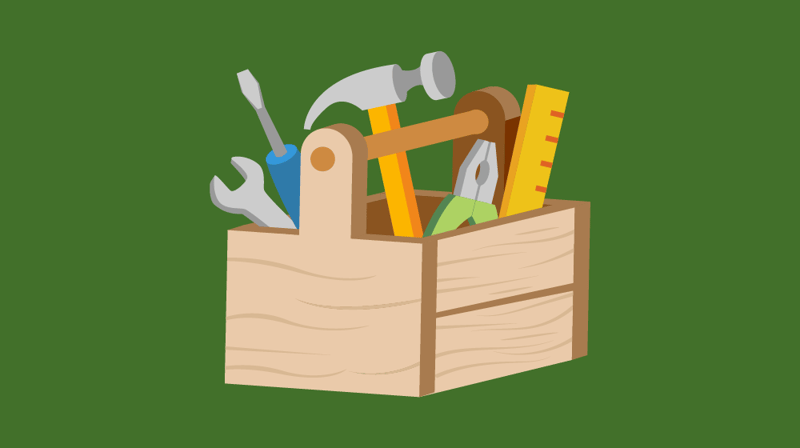When I was a new professional, data was the last thing on my mind.
I was fresh out of graduate school and had barely made it out of statistics alive. I measured my success as a hall director by my skills as a relationship builder, event planner, and facilities manager. I knew my students and knew how to do my job.
So when my supervisor asked me to provide data on our programs to help “tell our story” to the division, I was nervous. I hadn’t prioritized assessment in my work. I was swamped with the other aspects of my job, and making my students fill out surveys sounded like a waste of time and energy.
My programs were successful by attendance metrics, but were they successful in other ways? I had no way of knowing.
And who were these students? Why did they come to certain programs and ghost on others? Was purchasing all that pizza really worth it? And the biggest question of all: What, if anything, were those students getting out of my work?

I needed to find out, so I turned to data.
Gathering data doesn’t add more work to your plate; it helps support the work already being done.
Don’t run away from data. Turn to this: The beginner’s guide to becoming a data nerd.
Ways to Embrace Data
1. Define data for yourself
Data means different things to different people. Probably no one is asking you to conduct research and write a thesis, so you can save the Ph.D pursuits for later.
Data: A collection of information that helps us understand the effectiveness of our work, allowing us to better understand student patterns and behaviors.
Student affairs data might include things like dining feedback or a campus climate survey. Studying these data sets can help you understand what you’re doing well and what you could improve upon. Then, you can make informed decisions that are guided by data.
2. Understand quantitative v. qualitative data
There are two main ways of collecting and measuring data that all higher ed professionals should know: Qualitative and quantitative.
Qualitative data focuses on gathering opinions, views, and lived experiences. For data newbies, this can mean focus groups, one-on-one conversations, or open feedback via surveys.
Quantitative data focuses on facts and numbers. This can involve attendance tracking or Likert scale questions on surveys. Since quantitative data is usually easier to collect than qualitative data, it’s great to use when you want feedback quickly.

You can also combine them. For example, a questionnaire using both qualitative and quantitative data can provide insight on students interested in applying to a study abroad program for the first time. Quantitative surveys could help you learn the demographics of these students (such as their ages, genders, and majors). Qualitative studies can reveal patterns concerning why students chose each abroad location and how the experience contributed to their personal and academic goals.
While it is easy to get overwhelmed by these metrics, you will need to utilize both method types to become a data nerd.
3. Plan ahead
Once the academic year begins, many student affairs professionals move full steam ahead and don’t slow down until the end of September.
It’s never fun scrambling to email surveys to first-year residents at the last minute. I will admit that I’m guilty of not gathering any feedback on my first six weeks of programs.
Figuring out ahead of time which questions you want to ask, plus how and when you want to administer those questions will save you headaches in the future.
If, for example, you work in campus activities and want to learn more about how students are getting involved, consider asking them questions about that.
Here are a few suggestions to get you started:
- How did they learn about this event or organization?
- What times work best for your schedule?
- What did you gain from your involvement?
- What would you like to see improved?
These answers will allow you to better understand how your students are engaging in campus life.
4. Utilize online resources
Besides paper sign-in sheets that tracked attendance (blegh), I wasn’t getting any feedback on my housing programs. With little funding and no access to a student engagement platform, I had to be savvy with what free online resources I could find.
One of my favorites was Kahoot. The online program allows users to easily conduct surveys in real time through a game-like setting. My students loved Kahoot! Many RAs even used it in floor programs.
Other free resources that I used were Google Forms and Survey Monkey.
During RA training, I was responsible for coordinating sessions and presenters, scheduling meals, booking rooms, and, of course, soliciting feedback.

Using these tools allowed me to send out a survey with a mix of Likert scale questions and free-form response boxes.
Plus, check to see if your institution has a student engagement platform. Another department may have access to it even if you don’t, and there may be an opportunity for you to hop on board.
5. Get feedback in person
Holding small focus groups throughout the year can give you a clearer picture of students’ true feelings.
If you work in a residence hall or another high-traffic area, you can ask students who pass you by to participate, simply by pulling them over for a moment. You could also host open office hours, stop by the student union, or attend events with students.
I once hosted a donut-themed program entitled “Do-Nut Stress” during finals week in my residence hall lobby. This was an opportunity for my students to take a break from their non-stop studying and for me to learn what other factors were contributing to their stress.
Before heading back to their rooms, students were encouraged to grab a donut, then write their top 10 stressors on balloons and pop them. I learned that parents, relationships, roommate drama, and finances were some of the top issues residents were dealing with. So, my RAs and I developed new self-care programs for the start of the spring semester with sessions focused on conflict resolution, effective communication, and money management.
You’ll be surprised what students are willing to share when you meet them where they’re at!
6. Train your team
Data and assessment should never be solo efforts. If you work with student leaders or graduate assistants, create buy-in by showing them why data is so valuable. This group can also a great testing ground to figure out if your survey is too long or is difficult to understand.
As a hall director, I noticed that my RAs weren’t interested in getting feedback from their residents. It became clear that if data wasn’t my priority, it wouldn’t be theirs either.
Modeling a positive attitude towards data can make all the difference.

Your students might not like it (at first) but they will at least understand why it’s valuable.
7. Keep it simple
Your assessment efforts don’t have to be as lengthy or as intense as the NSSE or other benchmarking surveys. A few short questions can give you the answers you need.
Another thing to be mindful of is survey fatigue. Chances are your office isn’t the only one on campus wanting to know how students are doing. Check your school’s academic and social calendars to make note of busy seasons.
If it’s feasible within your budget, provide incentives. Anything from candy bars and school swag to big-ticket items like iPads or gift cards is fair game. Students are more likely to participate in assessment if they know there is a prize at the end.
Data doesn’t have to be scary. It can help you improve your work and show you how to better serve your students. Don’t be afraid to ask questions and learn from your mistakes.
Do what you can, use the resources around you, and remember that you already do great work. Now you’re gathering data to prove it!

How have you become a data nerd? What questions do you still have about data? Let us know on Twitter @themoderncampus and @Meg_Roll.





